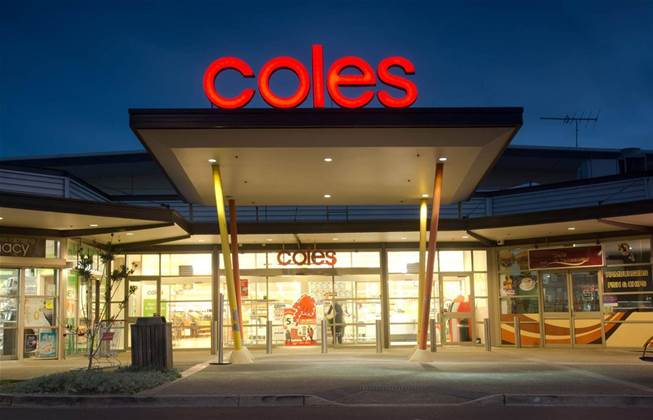Coles Group has provided its first look at a powerful forecasting engine built by its advanced analytics team, which acts as a bolt-on to its existing replenishment system.

The engine, coded in R, takes into account around 1500 data points or “features” to understand local requirements down to a day, store and individual product (or stock keeping unit, SKU) level, as well as calculate regular inventory forecasts.
To date, Coles has really only discussed its advanced analytics work in passing, pointing to “awesome work” last May when it put in more support infrastructure, and then in August when it credited analytics investments for achieving savings and revenue growth.
The retailer provided the first real details of the program in a briefing to student participants of the UNIHACK 2021 hackathon, which was held over the weekend.
General manager of technology, engineering and data Peter Bonney showed off code snippets from the company’s “core forecasting engine”, which he described as “a very advanced analytical algorithm that forecasts stock movements down to a day, store and SKU level, as well as pricing and demand.
“It takes into account well over 1500 different features, everything from what’s the sporting event at the local oval, to things like cannibalisation, so if I buy one product, does it come at the expense of another product,” Bonney said.
“It’s hugely sophisticated.”
Bonney went on to say that the engine plays a “massive role in helping forecast demand in stores” and that it had been rejigged to provide additional intelligence during Covid-19.
“We re-applied it throughout Covid to answer different questions like how many people do we think are going to go into a particular store at a particular time of day, which then helped us adjust how we supported the store team to create a safe environment for our team members and customers,” Bonney said.
“Analytics has played a critical role everyday and certainly a critical role throughout Covid.”
Head of disruptive technology - essentially Coles’ Lab288 function - Ben Youl said the forecasting engine is one of “hundreds” of examples of applied analytics being driven out of the advanced analytics team.
“The algorithm that Peter [Bonney] was describing is one great example of really applied globally innovative analytics within our organisation,” he said.
“There are hundreds of examples. There are so many things that that team do - everything from linear regression modelling all the way up to deep learning - to solve really complex data-related problems that have already hugely affected our productivity and optimisation at Coles.”
While Bonney focused on the benefits of advanced analytics that were seen in stores, Rahul Gupta, digital program manager for Coles Witron-based automated delivery centres, said analytics also heavily touched the underpinning supply chain side of Coles’ business.
“[Bonney] talked about advanced analytics views of the store, but the same advanced analytics helped us with the type of future projections for what the supply chain looks like in terms of how much stock movement needs to happen,” Gupta said.
“Today, 95 percent of the items that you see in the stores are all on automatic ordering. The store does not need to place any orders. Our analytics behind the system looks at the history, looks at the plans, and projects that order demand for the stores that come from all the delivery centres.
“That’s a massive thing because it takes away all the effort from the stores to make sure they spend that effort with the customer - on the floor talking to them, guiding them, rather than being on the pad making orders.”
Gupta said that advanced analytics - at least architecturally speaking - acted as a “bolt-on” to Coles’ existing replenishment systems.
He said this was intended “to make sure we utilise all the new metrics and tools that give us the best predictions of the future.”
“We predict now pretty much about 42 days in advance of what our demand looks like, and that’s the same demand that we then project back to our suppliers so that they can manage their pipelines as well,” he added.
Analytics touched a number of systems within the supply chain, including warehouse, transport and personnel management systems.
The presentations also provided a snapshot of Coles Group’s technology function, which now has about 1800 staff and 300 active projects.

.jpg&h=140&w=231&c=1&s=0)

.png&h=140&w=231&c=1&s=0)

















